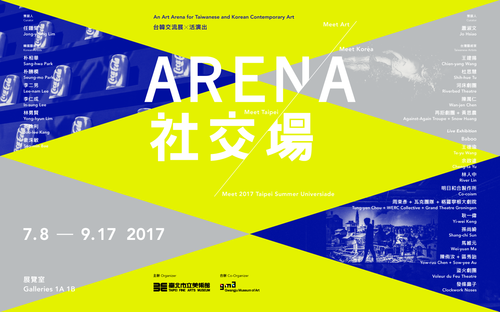Chen Wan-Jen Participating in "Arena" in Taipei Fine Arts Museum
Arena brings together dance, the human body, theater, music, sound, image and text, exploring a synergetic relationship arising from the convergence of exhibition and performance. Crucially, the way an art exhibition is mixed with performance, whether it be bringing the two in close proximity or intermingling them, can be seen as a form of creative “symbiosis.” At the level of meaning, live performance dovetails with the concept of exhibiting “living objects.” Fundamentally, when this kind of work is placed within the structure of an exhibition, the participants perform repeatedly throughout the exhibition period, serving the function of continuous and cyclical display. The main distinction is that they use non-visual forms of expression and an immediately present mode of performance.
Within such a context, this exhibition combines static display with live art. The displayed portion encompasses an exchange exhibition between Taipei Fine Arts Museum and the Gwangju Museum of Art. The Taiwanese artists seek to “interpose the viewer,” causing a structural transformation to take place in a single subject (work), to engender a real experience for the viewer, and not merely an experience existing in the viewer’s consciousness. Meanwhile, the Gwangju Museum of Art presents seven Korean artists at the height of their careers. Through a variety of art forms such as painting, installation and video, they demonstrate the diversity and value of Korean art. Through this “Arena,” both the Taiwanese and the Korean artists endow their works with a distinctively present-tense significance, engaging in a dialogue on the societal level in conjunction with the Summer Universiade currently taking place in Taipei, and seeking out a highly hybridized social milieu, either outwardly manifested or lying latent within contemporary existence.
Set against the backdrop of the displayed art, a series of live exhibitions penetrates the many different levels of exhibition and performance. Within the frameworks that are made possible, the artists create a spectrum of performance forms, from participatory art, webcast and lecture performance to puppet theater, documentary theater, dance, music, sound, performance art and video, comprising a single collective theme. Ultimately, the effect this exhibition aims to achieve through consciousness of form (exhibition and performance) is to stir up visitors who have long been in the habit of leisurely viewing exhibitions, jangling their nerves and their spirits, and placing them in a state of unease, excitation, suspension and bemusement. It aims to pose questions regarding the media and materials of contemporary art, the relationship between viewer and artist, and the social and public nature of art environments.
